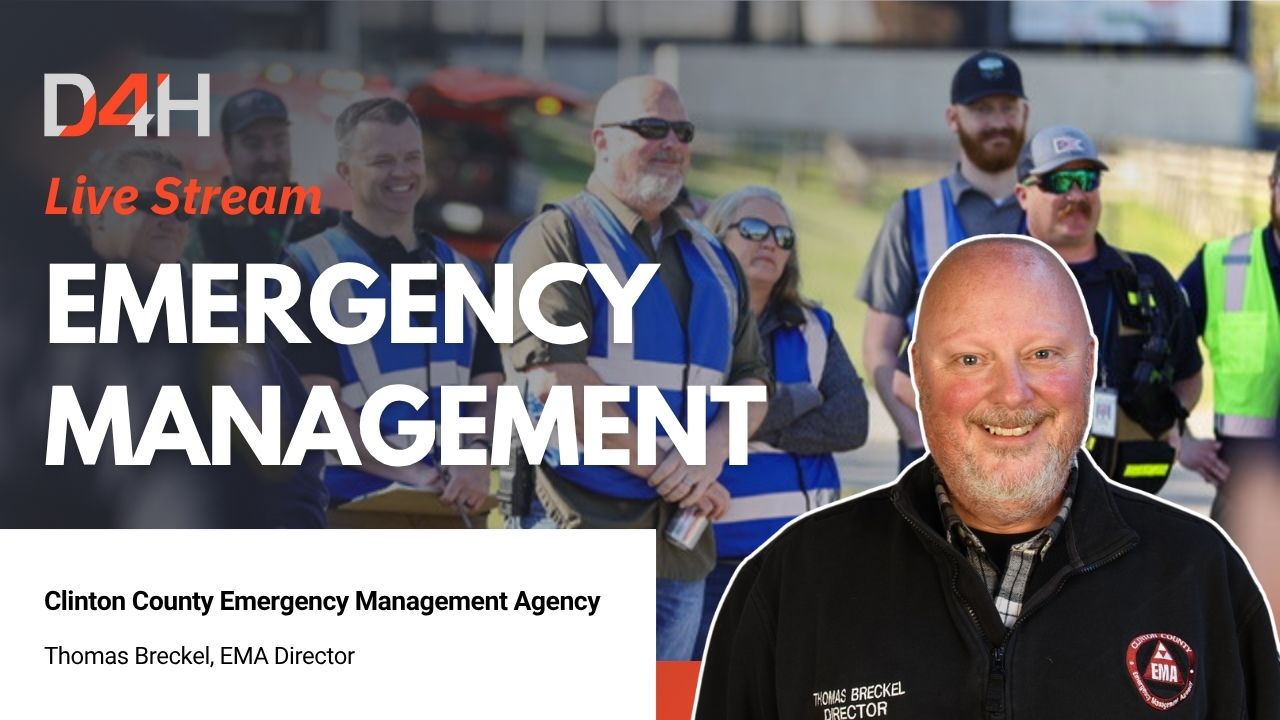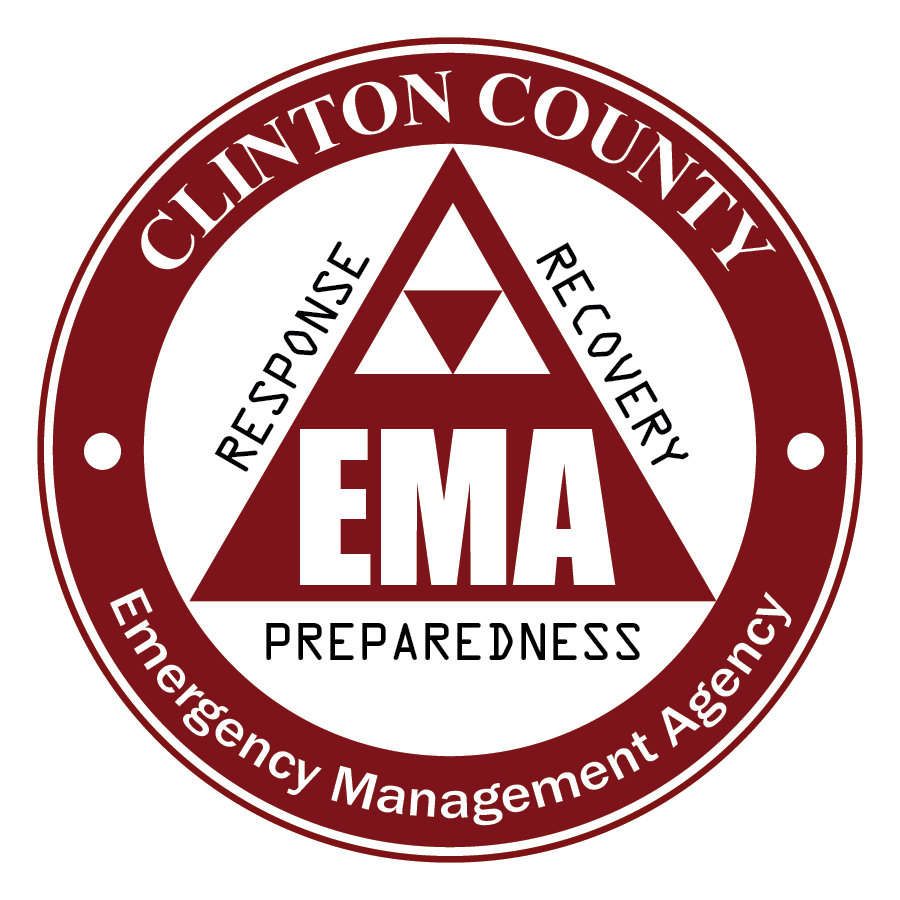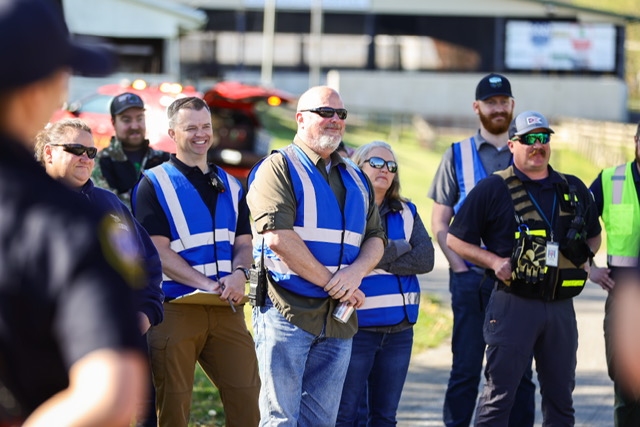
A rural Ohio county’s evolving approach to modern hazards
We were joined for a second live stream by the Clinton County Emergency Management Agency (EMA). During our chat, Thomas Breckel shared how his team runs daily operations and major incidents using D4H. From hazmat response to public alerts and even alien invasion drills, it was a session packed with real insights and creative use cases!
Clinton County EMA
When Clinton County Emergency Management Agency (EMA) in Ohio first adopted D4H in 2020, the COVID-19 pandemic served as an urgent catalyst for their digital transformation. Three years after their initial live stream with D4H in 2021, and under the dedicated leadership of Emergency Management Director Thomas Breckel, Clinton County EMA has undergone a remarkable evolution. They've not only integrated the software deeply into their operations but have significantly bolstered their emergency preparedness and response capabilities, marking a true stride forward in safeguarding their community.
Clinton County, has a fascinating blend of rural agricultural landscapes and a major logistical hub, home to one of the largest cargo airports in the United States. This unique geographical and economic mix presents diverse challenges for emergency management, and the Clinton County EMA has risen to the occasion with innovative solutions.
Clinton County EMA operates efficiently, with Tom leading as a dedicated "office of one." Recently, the team expanded to include a part-time bookkeeper and volunteer coordinator, who helps manage the financial and volunteer aspects. This growth has been supported by D4H, which Tom describes as an affordable and invaluable tool for a rural county. He uses it daily for all EMA-related tasks, including weather monitoring, exercise support, and even for the Local Emergency Planning Committee (LEPC) to manage Tier III and HazMat incidents. D4H allows him to create standardized, professional forms, a significant leap from previous manual, time-consuming methods.

Clinton County has experienced some notable changes in recent years. State programs have enhanced internet connectivity, particularly in rural areas, which has significantly strengthened communication networks across the county. While the community's close-knit nature endures, the most significant shift has been in weather impacts. Over the last five years, severe weather events have noticeably increased. Last year, Ohio set a historic record for tornadoes, and Clinton County itself experienced three tornadoes in a single early morning this past April. These changing weather patterns underscore the agency's heightened focus on preparedness and efficient communication.
Daily Operations with D4H
Tom's strategic use of D4H permeates every aspect of Clinton County EMA's operations, proving its versatility and impact.
For daily preparedness, the public link feature is a game-changer. For example, during a multi-day HazMat incident on theI-71 in downtown Wilmington, Tom quickly activated a "standby incident" in D4H. He populated forms with real-time information and photos, then generated a static link. This link, easily shared via email or text, provides crucial updates to key elected officials. This simple yet powerful feature keeps officials informed without requiring them to navigate complex systems, allowing the EMA team to concentrate on managing the emergency.
"That public link is really a timesaver. You can email it or text it to anyone and they can pull it up on their phone while in the field."
— Thomas Breckel, Director of Emergency Management
Tom emphasizes a key lesson learned regarding status boards and forms: it is best to avoid over-creation. He initially created dozens of forms but now focuses on developing them based on existing paper documents, letting the necessary information dictate the structure of the boards. This streamlined approach ensures efficiency. He also leverages the static link for targeted communication with specific partners like power producers (AES and Duke Energy) and the Board of Public Affairs (BPA), ensuring they receive precise, relevant updates.
"The power of that static link, I have different populations, key publics, and key individuals that when I create different boards or forms I have very targets lists as to who gets what."
— Thomas Breckel, Director of Emergency Management
Additionally, Tom has developed a Public Information Officer (PIO) form within D4H. This standardized form, pre-scripted for various weather events, is linked to Clinton County EMA's public emergency notices webpage. When activated, a text notification reaches approximately 12,000 county subscribers, directing them to the page for immediate, vital information. Updates made in D4H automatically refresh the webpage, providing consistent and timely information—a true time-saver during critical events.

Enhancing Communication and Training with D4H
One of the ongoing challenges for local EMAs is communicating effectively with state agencies that might use different software. Tom addresses this by using D4H's public link. He shares these links with regional state representatives, granting them instant access to crucial incident data. This proactive approach significantly reduces the need for constant phone calls, streamlining reporting and ensuring consistent, accurate information flow across agencies. Neighboring counties using D4H have also adopted this practice, further enhancing regional interoperability.
"The public link keeps things very simple and very easy."
— Thomas Breckel, Director of Emergency Management
Clinton County EMA also uses D4H for cutting-edge training exercises. Tom showcased an exercise called "McKay Station," a unique scenario involving an alien attack in Clinton County. This imaginative approach allows participants to focus on mastering the software's capabilities and information input processes without the constraints of real-world variables. During the exercise, participants tracked lifeline impacts, identified hazards, and mapped incident locations, even uploading "UFO crash site" photos. This creative scenario fosters deeper engagement and practical application of emergency management principles.
The integration of custom map layers within D4H is another vital component. Tom manually mapped out the county's power transmission and distribution lines, creating a crucial visual resource for assessing infrastructure vulnerabilities. He also imports National Weather Service (NWS) polygon data for historical tornado paths, providing vital context for forecasting and understanding potential impacts. These visual tools enhance situational awareness for both the public and responders.
Furthermore, D4H simplifies the management of critical data, such as priority dependent patients—individuals relying on electrically powered medical devices. By importing Excel data from outside agencies, Tom can quickly access and map essential information like fire and EMS districts. The relationship fields within D4H are particularly impactful, enabling the tracking of a patient's entire lifecycle, from pickup to transport to shelter, providing a comprehensive audit trail for after-action reports.
"The relationship we can see that this person or that person moved, and its very quick and easy, and now Red Cross can confirm your list matches our list."
— Thomas Breckel, Director of Emergency Management
The Future of Emergency Management in Clinton County
Clinton County EMA's journey with D4H is a shining example of how a small, dedicated team, led by a forward-thinking director like Thomas Breckel, can achieve remarkable strides in emergency preparedness. By embracing digital transformation and leveraging the versatility of emergency management software, they've streamlined daily operations and have also significantly enhanced their ability to communicate, train, and respond to the evolving challenges of their unique community.
Watch the full interview on Youtube: Watch Now
Listen to the full interview on Spotify: Listen Now
Watch on YouTube
Highlighted Features
Recommended Software
Recommended Products
All content provided on this blog is for informational purposes only. D4H makes no representations as to accuracy, completeness, currentness, suitability, or validity of any information on this site and will not be liable for any errors, omissions, or delays in this information or any losses, injuries, or damages arising from its display or use.







.png)